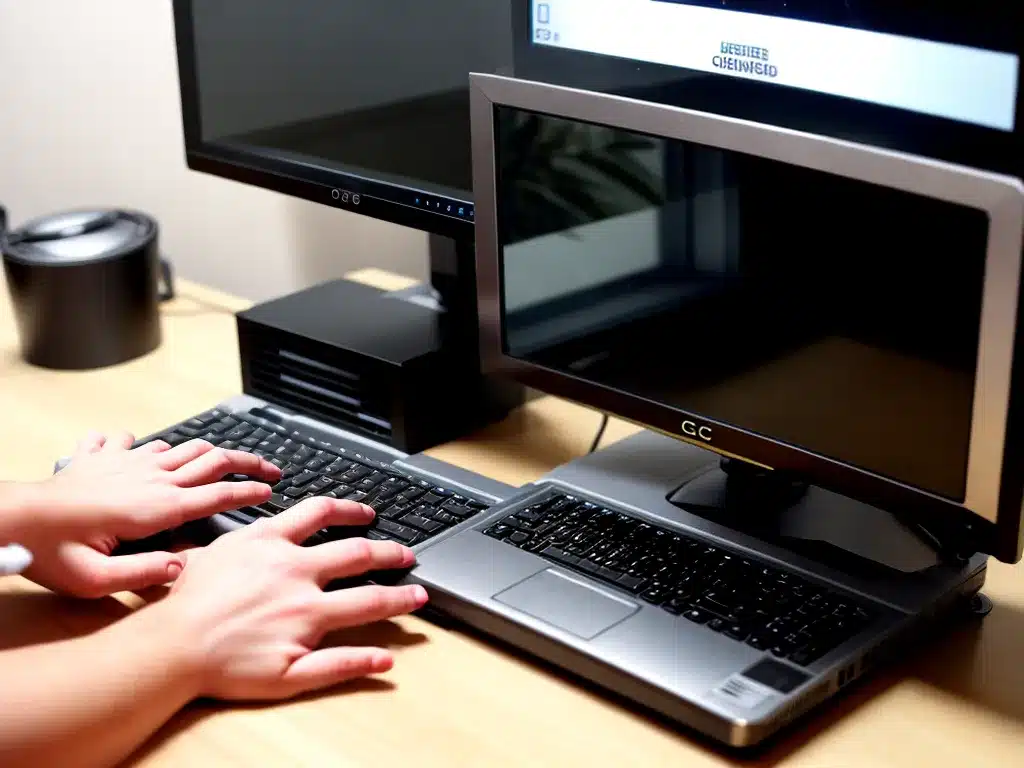
Introduction
Keeping the inside of your desktop PC clean is important for optimal performance and longevity. However, you need to be careful when cleaning the internals to avoid damaging sensitive components. In this guide, I will walk you through the steps to safely clean the inside of a desktop PC.
Gather Appropriate Cleaning Tools
To clean the inside of a desktop PC, you will need:
-
Compressed air – Used to blow out dust. Get an air canister specifically designed for electronics.
-
Microfiber cloth – For wiping down components. Choose a lint-free cloth.
-
Small paintbrush – For dislodging stubborn dust particles. Look for a soft-bristle brush.
-
Isopropyl alcohol – For cleaning thermal paste off CPUs and heatsinks. Use a high percentage 70%+ isopropyl alcohol.
Avoid using towels, tissues, or paper towels as they can leave behind fibers and lint. Do not use water or any liquid cleaners except isopropyl alcohol.
Prepare Workspace and Remove Side Panel
Pick a clean, dry, static-free workspace to clean your desktop. An open area on a table would work well.
Before opening up the PC, turn it off and unplug the power cable. Make sure to ground yourself by touching a metal part of the case. This will discharge any static electricity from your body which could damage components.
Carefully remove the side panel from the desktop case. This will expose the internal components and allow access for cleaning.
Use Compressed Air to Remove Dust
With the side panel off, use short bursts of compressed air to blow dust out of the PC. Work methodically from one side of the case to the other.
Hold the can upright and keep it 6-12 inches away from components. Getting too close can create condensation issues.
Focus on dust buildup areas like intake and exhaust vents, fans, heatsinks, expansion slots, etc. Dust particles will get dislodged and blown out of the case.
Wipe Down Components
For components with more stubbon dust or debris, use a microfiber cloth to gently wipe them down.
Take extra care around fragile parts like circuit boards. Try not to bend or apply pressure to them.
If there is dried or caked-on dust, use a paintbrush to loosen it before wiping. The isopropyl alcohol can also help dissolve stuck-on gunk.
Remove Heatsinks and Clean Thermal Paste
For thorough cleaning, the CPU heatsink and GPU cooler may need to be removed to access all sides. Refer to your motherboard manual on proper heatsink removal.
Before re-attaching the heatsinks, clean off the old thermal paste residue from the CPU/GPU chips and heatsink surface using isopropyl alcohol and a microfiber cloth.
Apply fresh thermal paste in a small 1-2mm dot on the chips. Too much or too little paste can negatively impact cooling performance.
Blow Out Case With Compressed Air
After cleaning individual components, do a final pass with compressed air on the entire case interior to remove any remaining dust particles.
Pay special attention to hard to reach corners and crevices where dust likes to collect.
Reassemble PC and Boot Up
With the cleaning complete, carefully reattach and reconnect all components that were removed. Double check all connections are secure.
Replace the case side panel and plug the power cable back in. Boot up the PC and verify normal operation.
The inside of your desktop should now be dust-free and running at peak performance again! To maintain it, I recommend repeating the cleaning process every 6-12 months.
Additional Tips
-
Back up important data before cleaning in case of accidental component damage.
-
Only open up and clean a desktop when powered off and unplugged.
-
Never use a vacuum cleaner inside a PC due to static/ESD risks.
-
If unsure about removing a component, consult manufacturer documentation.
-
Thermal paste drying out can increase CPU/GPU temps over time. Replace every 2-3 years.
Thorough yet gentle cleaning followed by proper reassembly is the key to keeping your desktop PC clean and running optimally for years to come! Let me know if you have any other questions.












